Highlights of SIM 2022
By Stoyan Nihtianov (General chair), Kofi Makinwa (General co-chair and TPC chair), Viola Schaffer (TPC member), Mirijam-Otten Need (local organization)
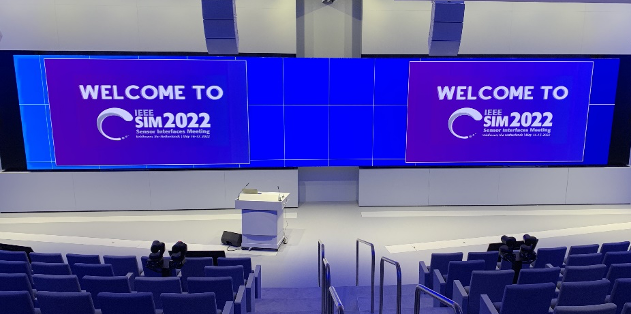
The first SIM meeting
The inaugural IEEE Sensors Council sponsored “Sensor Interfaces Meeting” (SIM) was held on 16 and 17 May 2022 as a fully in-person event, generously hosted by the hi-tech company ASML in Veldhoven, the Netherlands (https://2022.ieee-sim.org).
It took a few years the idea for such an event to mature and take a shape, before finally in May 2020 we were ready to launch SIM. Unfortunately, that appeared to be very uncertain times especially for on-site events just after the first peak of the Covid-19 pandemic. Following our believe that a workshop-like event as SIM should be held in-person, we took the difficult decision to cancel it and wait for better times.
Such a better time appeared to be May 2022! We are happy to inform the Industrial Electronics community about the successful first international meeting on sensor electronic interfaces. We believe SIM’22 was a success not just trusting our own assessment, but based on the very positive and encouraging feedback we received from the 120 attendees from both academia and industry.
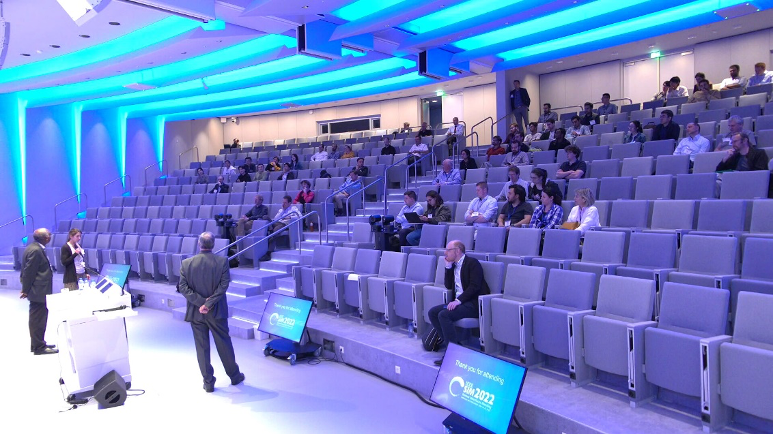
The motivation
Sensors is a multidisciplinary scientific and technology area. Many IEEE societies, including IES, have sensors in their broader field of interest. That is why in 1998 the IEEE Sensors Council was established for the purpose to advance and coordinate the scientific, literary and educational work in the field of Sensors carried out throughout the IEEE. Currently the IEEE Sensors Council has 24 member societies, including IES. For this reason, it was natural the IEEE Sensors Council to become the main sponsor of SIM.
Sensor interface circuits and systems is a popular technical and research field within IEEE. It is present in multiple IEEE conferences, as well as in the scope of a number of IEEE publications. At the same time, we found out that there was not a particular IEEE event dedicated solely to the latest achievements and most important trends in the field of sensor interfaces. This motivated us to start such an event in a workshop format, containing only keynote talks presented by leading experts in the field, and providing sufficient opportunities for discussions and interactions with the speakers. Another ambition was to make this event equally attractive for researchers and practitioners from academia and industry. To be successful in this, we knew that we had to guarantee the best possible quality of the lecture program.
Sensor interface electronic circuits is one of the most fascinating but also very challenging circuit design areas. The challenges arise from the ever increasing performance requirements like: precision, reliability, stability, robustness, power efficiency, resolution, extended functionality, etc. In addition, in the design of the interface circuit the sensor itself has to be included, which in most cases is not a standard electronic component. The sensor interface has not only the task to read out the electric signals from the sensor, but also to set up its best operating mode. The sensor operating mode can change its sensitivity to the measurand of interest, as well as its electrical properties and how it is interpreted in electronic circuits. An example: one and the same sensing element can be interpreted as an impedance, resistor, inductor, capacitor, depending on how it is operated in the electronic domain. This makes the sensor interface design multivariant, requiring a strong theoretical background, but also very much an extended practical experience of the designers. Nowadays the sensor signals are still considered predominantly analogue, which brings a strong analogue “flavour” of the sensor interfaces, although more and more often a limited number of electric charge quants – the electrons – need to be dealt with.
Next to the knowledge and experience, the inspiration of the researchers and designers plays a very important role in their performance. And inspiration comes with interactions and discussions with other colleagues, sharing ideas, receiving feedback and advice. This we consider the main mission of SIM.
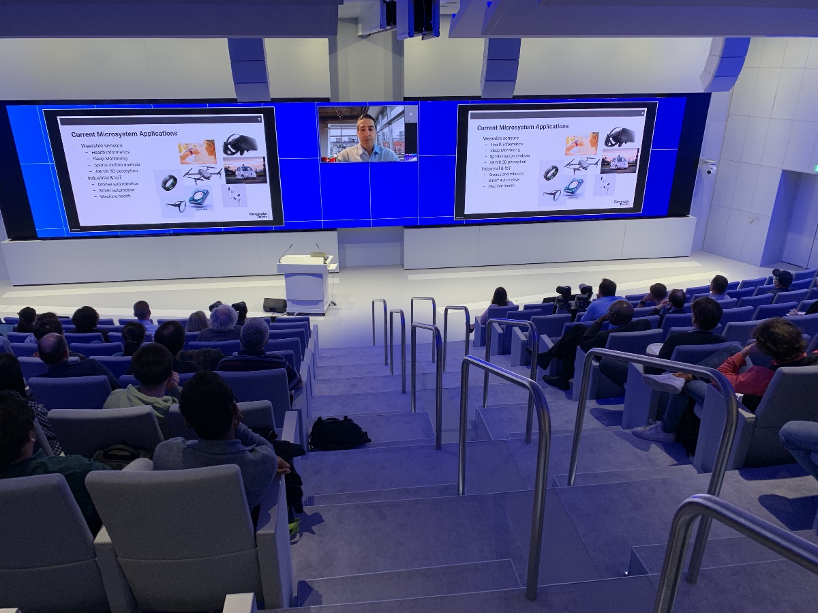
The venue
We were lucky to have an unusual venue for such events. The hi-tech company ASML in Veldhoven, the Netherlands, offered its hospitality to host SIM in its brand new and modern 400-seats conference center. ASML also provided the local organization and generously sponsored SIM. ASML is a large machine builder offering one of the most advanced and sophisticated machines humans have ever created: the lithography machine. The performance of this production tool defines to a large extend the progress in the manufacture of integrated circuits and is a key factor in supporting of the so-called Moore’s law in the semiconductor industry. One would ask himself: why a machine builder like ASML would be interested to be involved in an event related to sensors? Well, the short answer is: no machine performs better than its sensors. And in a single lithography machines there are many hundreds of sensors, some of them with extreme performance. Bringing on its soil one of the best experts in the field of sensors, researchers and professionals, students, representatives of leading sensor vendors, appeared to be worth the investment ASML made. It was also beneficial for SIM, next to the scientific program, the hi-tech industrial environment to attract academic participation.
The program
SIM’22 was a focused two-days event, featuring 12 outstanding invited speakers equally split between academia and industry. The theme focus of the 6 talks on the 1st day was “Sensor interfaces for the Internet of Things” while that of the 2nd day was “High Performance Sensor Interfaces”. Each keynote talk was 40 minutes, followed by a 10-minutes Q&A session, and a break of another 10 minutes.
Below are the topics of the talks:
| Day 1: Sensor interfaces for the Internet of Things | ||
| Sensors for the IoT | David Blaauw | University of Michigan, Ann Arbor |
| Energy-Efficient Power Management Circuits for IoT and Wearable Devices | Patrick P. Mercier | University of California, San Diego |
| Energy-efficient CMOS humidity sensors | Zhichao Tan | Zhejiang University |
| Low-Power Inertial Measurement Chips for Health Informatics and IoT | Farrokh Ayazi | Georgia Institute of Technology |
| Capacitive pressure sensors in standard CMOS technology | Alessandro Caspani | Infineon |
| IC design techniques and architectures for non-invasive health monitoring with PPG | Nick Van Helleputte | Imec |
| Day 2: High Performance Sensor Interfaces | ||
| 101 ways to readout a photodiode | Bart Dierickx | Caeleste |
| IC design techniques and architectures for non-invasive health monitoring with PPG | Nick Van Helleputte | Imec |
| High-Resolution Temperature Sensors for State-of-the-Art MEMS Frequency References | Kamran Souri | SiTime |
| A Stray-field-Immune Magnetic Displacement Sensor with 1% Accuracy | Gael F. Close | Melexis |
| Precision Fluxgate Magnetic Sensors for Current Sensing | Martijn Snoeij | Texas Instruments |
| Smart Ultrasound Probes: Going Digital in the Probe Tip | Michiel Pertijs | Delft University of Technology |
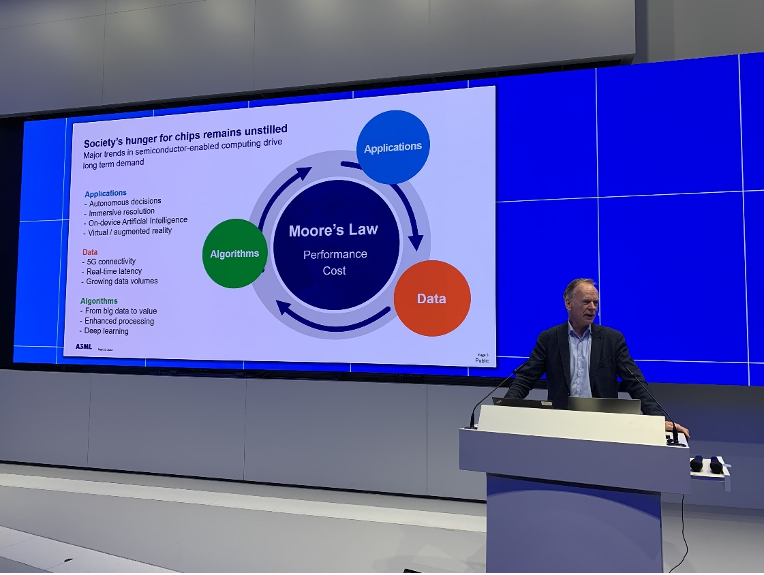
Next to the keynote talks, SIM had 7 exhibitors, all of them leading sensor vendors.
In the lunch breaks the attendees of SIM, organized in small groups and guided by their colleagues from ASML, were able to visit the “Experience Centre“ of ASML, which is a kind of a museum of the history, the technology achievements of the company, and its current business results.
The environment
We were happy to enjoy a very relaxing and friendly environment, allowing informal but often intensive interactions between the speakers and the audience, which often continued in the breaks between the talks. The modern venue with its excellent audio/video equipment and the technical support from the ASML professional operators, contributed to the excellent environment of SIM.
The organizers
The organizing committee comprised just 4 members, with the best possible balance with respect to gender and Industry/Academia:
- Kofi Makinwa, TU Delft
- Viola Schaffer, Texas Instruments
- Mirjam Otten-Need, ASML
- Stoyan Nihtianov, ASML / TU Delft
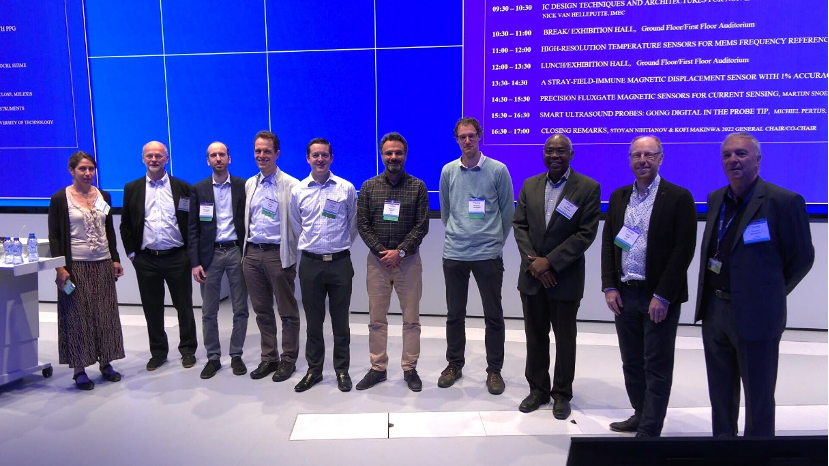
What next
Encouraged by the very positive feedback we received from the attendees and the keynote speakers, we are excited to continue organizing and further expanding SIM. The next SIM will take place in the same venue at ASML, on 8 and 9 May 2023, with a new excellent keynote program (https://2023.ieee-sim.org/). One of the recommendations we received was to add poster sessions to the program, which we shall certainly do. Moreover, by reducing the keynote talks from 12 to 8, we intend to provide even more opportunities for decisions and interactions.
We were lucky to be able to strengthen the organizing committee with a new member: Prof. Patrick Mercier from the University of California, San Diego, who will be part of the program committee.

